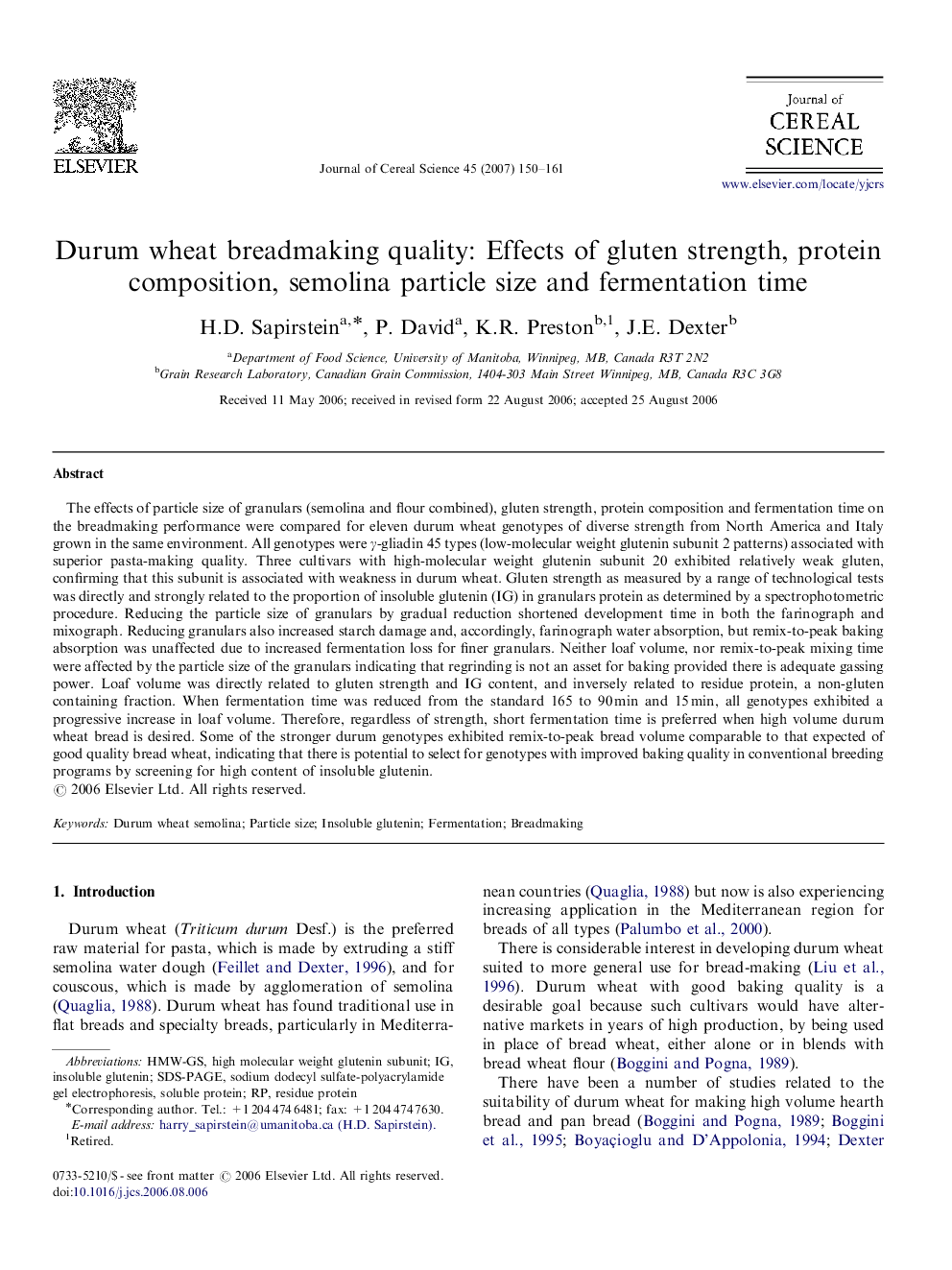| Article ID | Journal | Published Year | Pages | File Type |
|---|---|---|---|---|
| 4516616 | Journal of Cereal Science | 2007 | 12 Pages |
The effects of particle size of granulars (semolina and flour combined), gluten strength, protein composition and fermentation time on the breadmaking performance were compared for eleven durum wheat genotypes of diverse strength from North America and Italy grown in the same environment. All genotypes were γ-gliadin 45 types (low-molecular weight glutenin subunit 2 patterns) associated with superior pasta-making quality. Three cultivars with high-molecular weight glutenin subunit 20 exhibited relatively weak gluten, confirming that this subunit is associated with weakness in durum wheat. Gluten strength as measured by a range of technological tests was directly and strongly related to the proportion of insoluble glutenin (IG) in granulars protein as determined by a spectrophotometric procedure. Reducing the particle size of granulars by gradual reduction shortened development time in both the farinograph and mixograph. Reducing granulars also increased starch damage and, accordingly, farinograph water absorption, but remix-to-peak baking absorption was unaffected due to increased fermentation loss for finer granulars. Neither loaf volume, nor remix-to-peak mixing time were affected by the particle size of the granulars indicating that regrinding is not an asset for baking provided there is adequate gassing power. Loaf volume was directly related to gluten strength and IG content, and inversely related to residue protein, a non-gluten containing fraction. When fermentation time was reduced from the standard 165 to 90 min and 15 min, all genotypes exhibited a progressive increase in loaf volume. Therefore, regardless of strength, short fermentation time is preferred when high volume durum wheat bread is desired. Some of the stronger durum genotypes exhibited remix-to-peak bread volume comparable to that expected of good quality bread wheat, indicating that there is potential to select for genotypes with improved baking quality in conventional breeding programs by screening for high content of insoluble glutenin.
